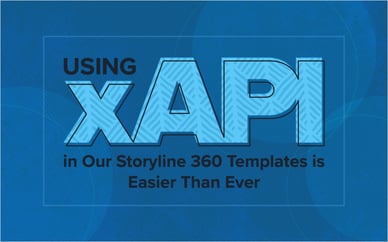Desktop computer. Laptop. Tablet. Smartphone. Phablet. (Yes, I said “phablet.”) There are a lot of devices out there for you to choose from when delivering e-Learning. You could just go “eenie meenie miney mo,” or you could read this awesome blog post and figure out which device is best for your e-Learning.
Desktops and laptops—the reliable old standard
If you have older employees, a desktop or laptop computer might be the device they feel the most comfortable using for training. In addition, desktops far outweigh any mobile device in terms of sheer screen size. If your learners need to look at complicated blueprints or detailed graphs, they will appreciate the biggest screen they can get. Desktops are also the best choice if your LMS doesn’t support mobile devices.
Tablets—the fastest growing segment ever in the mobile device category
Tablets are extremely popular with businesses. In October 2011, Apple’s CEO famously claimed that 92% of Fortune 500 companies were testing or deploying the iPad. AT&T created a series of videos titled “Tablets at Work” to show how businesses could integrate tablets into their day-to-day operations. Here are the links: one, two, three and four. Beyond everyday business operations, tablets are great for learning. For example, Emirates Airlines uses tablets loaded with custom apps to provide crew members with performance support. The large touch screen is practically begging for gesture-based interaction and engaging content. If you’re considering a game-based e-Learning course, you should definitely think about making it compatible with a touch screen.
Smartphones—always with your learners
Do your employees travel often in their roles? Whether it’s a weeklong business trip or a quick field visit, being able to access mobile resources on their phones can be very beneficial for your employees. Smartphones are ideal delivery devices for performance support and just-in-time learning.
Phablets—phone + tablet
According to Verizon Wireless, phablets are “essentially smartphone-tablet hybrids. They’re feature-rich devices with screen sizes between 5 and 6 inches that offer the portability and functionality of a smartphone crossed with the dynamic, big-screen experience of a tablet, stylus sometimes included.”
Because of their larger size, phablets are great for multi-tasking. Some even allow you to open up multiple windows on a single screen and run two apps simultaneously—or even open one app in two windows. So, your learner could watch a training video while taking notes onscreen next to the video. If your training is graphic or video-heavy, consider a phablet as the hybrid device will usually provide a higher resolution display than a typical smartphone could.
There’s no one-size-fits-all approach when it comes to e-Learning. You need to consider your organizational needs and your learners’ preferences, but hopefully this information helps you narrow down your device selection.






